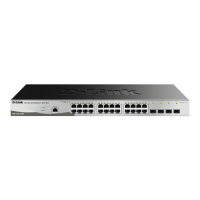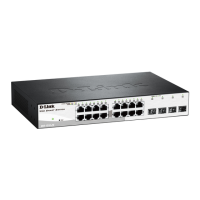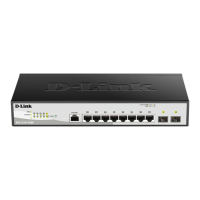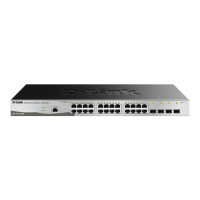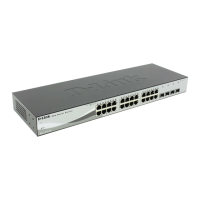5 Configuration D-Link Web Smart Switch User Manual
Figure 48 – Configuration > 802.1Q VLAN > Default Setting
Figure 49 – Configuration > 802.1Q VLAN > Add VID
Figure 50 – Configuration > 802.1Q VLAN > Example VIDs
Figure 51 – Configuration > 802.1Q VLAN > VID Assignments
Configuration > Asymmetric VLAN
This function is located in the 802.1Q Configuration page. It allows devices in different VLANs to
communicate with the servers, firewalls or other shared resources in the shared VLAN. This configuration is
accomplished in three steps:
Enabling Asymmetric VLAN function
Creating shared VLAN and access VLAN
Configuring the PVID of access VLAN
Asymmetric VLAN is especially effective when used in a small network where a L3 routing device is absent,
or if the resource to be shared is not capable of supporting tagged VLAN (for example, a printer).
The example below is a typical application of Asymmetric VLAN. Servers and firewall are located in shared
VLAN (default VLAN), and PCs 1, 2 and 3 are located in different VLAN. Because VLANs remain separate,
3
3
1
1
